Dada and Surrealism
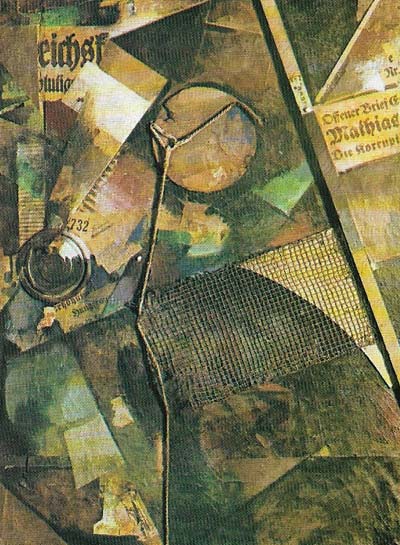
Figure 1. Kurt Schwitters, a Hanover Dadaist, made his "Merz" pictures, such as "Das Sternbild" (1920), from rubbish. They contrast strongly with the neat collages of the Cubists. Their texture is rich, their design strong.

Figure 2. Max Ernst's "Two Children Threatened by a Nightingale" is an early (1924) Surrealist attempt to render in paint experience of dreams. Ernst uses both paint and wood relief, the latter breaking out of the illusionist space of the picture surface to spill across the frame, perhaps an analogy for the transition from the nightmare to the waking world. Birds are an obsessive motif in the art of Ernst. The threat of the nightingale represents here both an external menace and fear at discovery of sexuality.
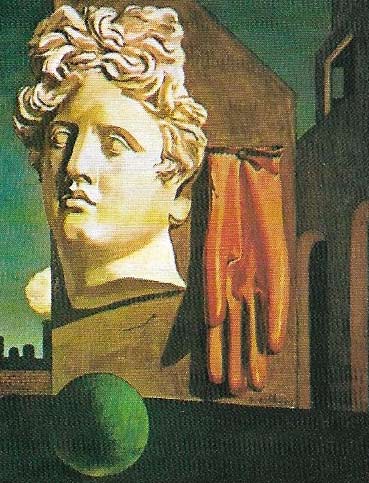
Figure 3. "Song of Love" (1914) by Giorgio de Chirico (1888–1978) is one of his mysterious scenes that anticipate the dream pictures of the Surrealists. However, he rejected their psychoanalytic interpretation of his art and was concerned with creating a heightened "metaphysical" awareness of reality without any desire to shock in the Surrealist manner. Indeed, our surprise at the juxtaposition of the plaster head and rubber glove stems from the confounding of expectation.
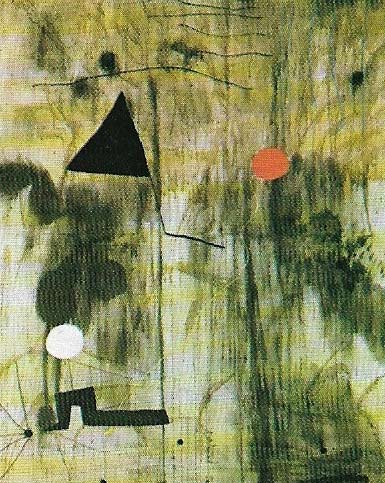
Figure 4. Miro's "Birth of the World" with its exquisite contrasts of hard-edged shapes and abstract washes shows how effective the Surrealist notion could be that the painter should free his imagination by painting without any preconceived idea of the end result.
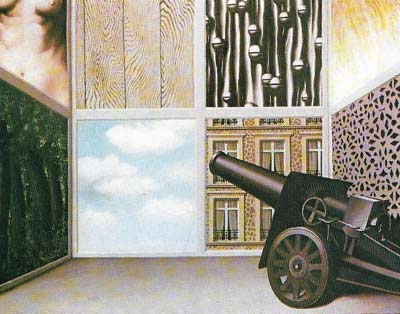
Figure 5. Rene Magritte's "On the Threshold of Liberty" raises paradox to a point where our notions about the way we understand a picture are much undermined (just as Surrealist philosophy threatened established morals by making desire, although violent or perverse, the final criterion of all value judgments). The openings on the surrounding space are contradictory. The woman's torso and the cloudy sky cannot both be real. Which, if any, represents liberty? Perhaps they are all just painted panels on an imprisoning wall? The only way to find out for sure would be by firing the cannon.
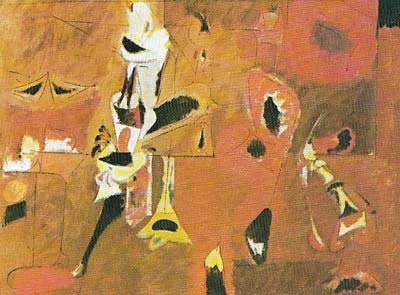
Figure 6. "Agony" (1947) was painted by Arshile Gorky. Armenian-born Gorky was strongly influenced by Miro, who we met is a refugee in New York during World War II. By 1944 Gorky had arrived at a more original style based on automatic procedures (highly diluted paint dribbled down the canvas) while retaining suggestions of organic form. His final works, such as "Agony" were more tightly handled, and brought to abstraction unprecedented emotional force.
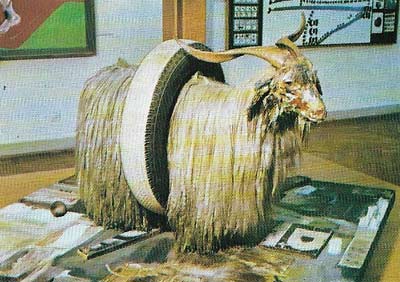
Figure 7. Robert Rauschenberg's 'Monogram' (1961) is almost a posthumous compendium of Surrealist preoccupations. The unusual stuffed animal was sometimes presented as a "found object" in Surrealist exhibitions; here, as usual, it is given an unexpected context. The accumulation of letters and images on the base suggests the "Merz" pictures of Schwitters, and the Surrealist automatism survives in the vigorous smears of paint. The implications of the juxtaposed goat and tire and the red paint on the face make it clear that the subject is a traumatic birth. Veiled presentation of taboo themes was a constant element in the shock tactics adopted by the Surrealist group.
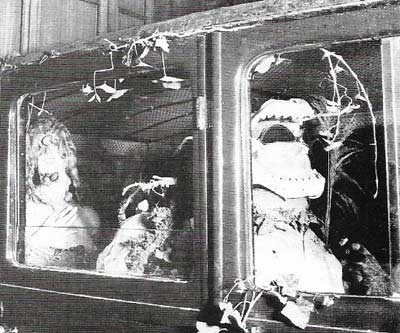
Figure 8. Salvador Dali's "Rainy Taxi" (1938) had live snails climbing over the face and chest of the mannequin. The disturbing eroticism is characteristic of Surrealism and Dali's particular adeptness here, plus his genius for publicity, marked him in the public mind as the Surrealist leader long after he had left the movement.
World War I had a twofold impact on the development of 20th-century art. The centers of activity moved from France and Germany to New York and neutral Switzerland. Meanwhile the rejection of established artistic values (postulated by the Cubists and the Expressionists) acquired a new political relevance in the light of the war, which many intellectuals saw as the logical culmination of the whole ethos of the nineteenth century.
Shock the bourgeoisie!
Dada, a complex international movement, was essentially an attack on both artistic and political traditions. There remains some controversy as to the origin of the name, but it was certainly in use by the middle of 1916 to describe the activities of the Cabaret Voltaire in Zurich, which included performances and recitations intended to outrage the conventional. One of the early associates was the Franco-German artist Jean (Hans) Arp (1887–1966). A refugee from the war, he was making wood reliefs based on organic forms so simplified as to appear ridiculous; in his own words they were "designed to show the bourgeois the absurdity of his world". Meanwhile in New York, Marcel Duchamp (1887–1968) was questioning established artistic procedures – and, by implication, the context in which they operated – by exhibiting "ready-mades" such as a bottle-rack or urinal.
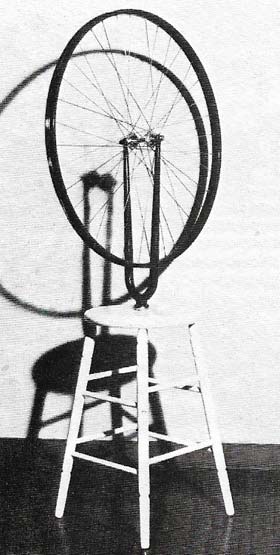 |
| Marcel Duchamp's "Bicycle Wheel" (1913) was the first of his "ready-made", attacking the almost religious reverence given by society to original artworks. An artist's choice of object, in this instance reflecting an interest in movement shared with the Italian Futurists, was enough reason to give it artistic status, to place it on a pedestal, here represented by a stool. By 1964, this rebel had been excepted sufficiently for in edition of replicas of this work to sell well. |
After the end of the war Dada spread to other centers. Its varied guises had in common nihilism and a desire to shock by whatever means possible.
The collage technique developed by Picasso and Braque was employed by many Dadaists for their own subversive ends. Kurt Schwitters (1887–1948) made art from rubbish (Figure 1) and Max Ernst (1891–1976) assembled fragments of photographs and engravings to create irrational compositions. This latter method was to lead Ernst back to the art of painting when, in 1921, he embarked on a series of paintings in an illusionistic academic manner that presented suggestive and disturbing juxtapositions of images (Figure 2).
As the Dada manifestations died down, a group of writers and painters including Ernst and Arp assembled in Paris around the poet Andre Breton (1896–1966). While sharing Dada's disgust for bourgeois values, they rejected its nihilism and adopted a strongly positive philosophy inspired by the psychological theories of Sigmund Freud (1856–1939). They believed that society repressed man's true nature and that in both life and art it was necessary to give full rein to the imagination. In the First Surrealist Manifesto of 1924, Breton defined Surrealism as "pure psychic automatism" and decreed that Surrealist literature was to be achieved by writing without conscious control.
Chance and imagination
When applied to painting, this procedure led Surrealism away from illusionism. Joan Miró (1893–1983) in his paintings of 1925 laid down highly diluted paint in a fairly arbitrary fashion that would simply suggest the lines of a more controlled composition (Figure 4). Ernst sought inspiration in the textures of wood grain which he transferred to the surface of the paintings by rubbing. Both painters were exploiting chance in order to provoke the imagination to broaden into new directions.
By the end of the decade Surrealism had returned to the illusionism of the earlier Ernst, largely as a consequence of the impact made by the work of Salvador Dali (Figure 8) (1904–1989) who painted sensational subject-matter deriving from psychoanalysis in a highly accomplished academic manner. The Belgian Rene Magritte (1898–1967) rejected automatism in favor of the presentation of startling visual paradoxes (Figure 5).
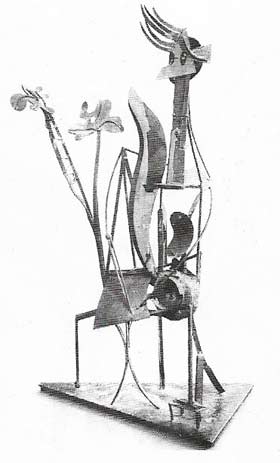 |
| Pablo Picasso was never a member of the Surrealists group, but his "Woman in a Garden", unifying as it does images of both flowers and the female body within one structure, was the kind of metamorphosis that appealed strongly to the Surrealists. They were eager to claim him as and antecedent and ally because of his great prestige, his love of visual metaphor and the strong erotic content of much of his art. These factors became particularly apparent in the late 1920s, when his work turned towards great violence of expression after a period of serene classicism. He had found an ideal vehicle for fantasy in the new sculpture. |
Generally the Surrealists of the 1930s tried to express the unconscious by highly conscious artistic means. At the same time they turned increasingly to the making of "object-sculptures" in order to create disturbing images in a more tangible form than was possible in the most illusionistic painting.
Examples include Miró's combination of a stuffed green parrot, an artificial leg and a bowler hat, and Maeret Oppenheim's fur-lined teacup. This tendency reached its climax in the Paris Surrealist exhibition of 1938. A total Surrealist environment was created here with a row of fantastically garbed mannequins; for the setting Duchamp covered the ceiling with coal sacks and the floor with moss.
World War II forced Breton and many other Surrealists to flee to the USA. Young painters there, most notably Arshile Gorky (1905–1948), took great interest in the automatic aspect of Surrealism and the way in which in the works of Ernst and Miró semi-abstract forms could bear a potent sexual charge (Figure 6). This led Gorky to a highly personal manner of loosely painted, contorted forms which influenced Jackson Pollock (1912–1956), whose "action painting" was in itself a form of automatism.
Surrealism in recent times
After the war Breton returned to Paris and continued to organize Surrealist exhibitions, but the real heritage of the movement lay elsewhere. The "combine-paintings" of Robert Rauschenberg (1925–2008) (Figure 7) have the irrational rightness of the best Surrealist objects, while the Dada assault on art and society has been continued by, for example, the self-destructive machines of Jean Tinguely (1925–1991).
